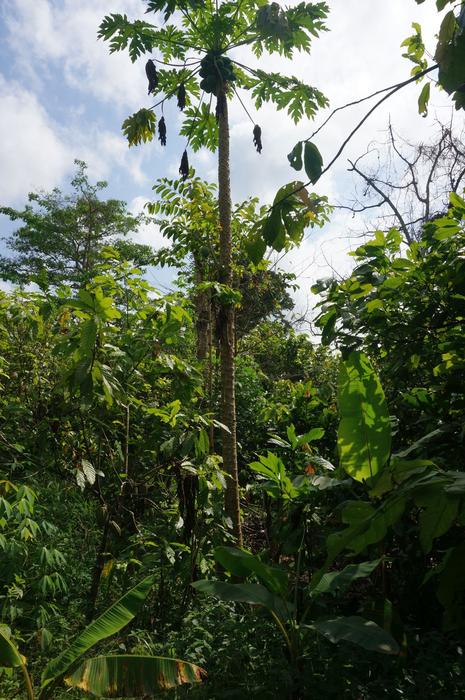When Will Companies Grasp the Cost of Climate Change? – Time Magazine

Report on Corporate Climate Resilience and Sustainable Development Goals
1.0 Introduction: Shifting Perspectives on Climate Adaptation
Historically, climate adaptation and resilience measures have been secondary to emissions reduction efforts in global climate discussions. However, a significant shift is underway within the corporate and financial sectors. The increasing frequency and intensity of climate-related events have made the physical risks and associated costs tangible, disrupting supply chains and business operations. This growing awareness aligns with the urgent call to action in Sustainable Development Goal 13 (Climate Action), which emphasizes the need to strengthen resilience and adaptive capacity to climate-related hazards.
2.0 Analysis of Physical Climate Risk in Business and Finance
During recent industry events such as Climate Week, executives and financial experts have highlighted the escalating importance of physical climate risk. The economic consequences of climate change are no longer distant threats but present-day realities impacting inflation, interest rates, and asset prices, thereby affecting progress towards SDG 8 (Decent Work and Economic Growth) and SDG 9 (Industry, Innovation, and Infrastructure).
2.1 Mispricing of Climate Risk
A consensus is emerging among financial experts that physical climate risk is systematically mispriced in investment portfolios. Asset managers operate with imperfect data, making it difficult to accurately assess the vulnerability of their investments. Jamie Franco, head of cross-asset research at TCW Group, noted that investors are often “flying blind” regarding the climate risk already embedded in their portfolios.
2.2 Economic Impacts and Systemic Threats
The economic repercussions of climate change are extensive and interconnected. Mark Zandi, chief economist at Moody’s Analytics, identified numerous channels through which climate change affects the economy:
- Inflationary pressures
- Fluctuations in interest rates
- Devaluation of assets
- Climate-induced migration flows
These impacts pose a direct threat to the stability required to achieve SDG 11 (Sustainable Cities and Communities) by undermining local economies and infrastructure.
3.0 Challenges to Implementing Corporate Resilience Strategies
Despite the recognized threat, companies face significant barriers to taking action commensurate with the scale of the problem. These challenges hinder the integration of climate resilience into core business strategies, which is essential for sustainable production patterns as outlined in SDG 12 (Responsible Consumption and Production).
3.1 Economic and Institutional Barriers
- Capital Allocation: Resilience efforts, such as hardening facilities, are capital-intensive and must compete with growth-oriented investments that offer more immediate financial returns.
- Shareholder Skepticism: Forward-thinking leadership may face resistance from boards or shareholders focused on short-term quarterly returns.
- Lack of Incentives: In most sectors, proactive resilience measures are not yet rewarded with benefits such as improved credit ratings.
- Over-reliance on Insurance: Some companies may be depending on insurance policies as a primary defense, a strategy that is becoming increasingly untenable as climate risks grow.
3.2 Data and Market Challenges for Investors
- Nascent Data: Metrics and data that measure corporate preparedness for climate events are still developing, making it difficult for investors to make informed decisions.
- Market Timing Uncertainty: It remains unclear when financial markets will begin to systematically price in climate risk, creating a disincentive for early movers.
4.0 Emerging Trends and Stakeholder Engagement
A notable mindshift is occurring, driven by increasing pressure from a range of stakeholders. This collaborative push for greater accountability and action reflects the principles of SDG 17 (Partnerships for the Goals).
4.1 Growing Demand for Climate Action
Investors, board members, and employees are increasingly demanding that companies address the climate risks within their operations and portfolios. Lori Goltermann of AON confirmed that this demand is a primary driver for change. Companies are beginning to recognize the costs of chronic climate issues, such as decreased labor productivity from extreme heat, which directly impacts the objectives of SDG 8.
4.2 The Challenge of Pricing Future Risk
A central, unresolved issue is predicting how and when climate risk will be fully priced into the market. Scenarios range from a gradual repricing over time to a sudden market shock following a major climate disaster in a global financial hub. Regardless of the timing, the consensus is that proactive preparation is imperative.
5.0 Conclusion: The Imperative of Proactive Resilience
The conversation around climate change has evolved from a primary focus on mitigation to include a critical emphasis on adaptation and resilience. For businesses and investors, addressing physical climate risk is no longer optional but essential for long-term viability and alignment with the Sustainable Development Goals. Companies that invest in resilience ahead of market repricing will be better positioned to navigate future disruptions, while those that delay action risk significant financial and operational consequences. Ultimately, building resilience is a fundamental component of achieving a sustainable and equitable economic future as envisioned by the SDGs.
Analysis of Sustainable Development Goals in the Article
1. Which SDGs are addressed or connected to the issues highlighted in the article?
-
SDG 13: Climate Action
The article is fundamentally about climate change, focusing on the shift from mitigation to “adaptation and resilience.” It discusses the necessity for society and businesses to prepare for the “physical costs of climate change,” such as hurricanes, wildfires, and flooding, which is the core of climate action and adaptation strategies.
-
SDG 8: Decent Work and Economic Growth
The article extensively links climate change to economic performance. It highlights how climate impacts “cost the U.S. economy billions in damage,” create “economic headwinds,” and affect key economic metrics like “inflation, through interest rates, through asset prices.” The disruption to business operations, which can “shutter operations,” directly threatens economic stability and growth.
-
SDG 9: Industry, Innovation and Infrastructure
The resilience of industry and infrastructure is a key theme. The article discusses the challenges for a “hypothetical industrial company” and the need for “hardening facilities” to withstand extreme weather. The mention of climate effects that “snarl supply chains” underscores the vulnerability of industrial infrastructure and the need for innovation in building resilience.
-
SDG 11: Sustainable Cities and Communities
While the focus is on businesses, the underlying issues relate to the resilience of communities. The article mentions climate-related disasters like “Hurricanes, wildfires, and inland flooding” that cause massive economic damage, directly impacting the safety and economic stability of cities and human settlements.
2. What specific targets under those SDGs can be identified based on the article’s content?
-
Target 13.1: Strengthen resilience and adaptive capacity to climate-related hazards and natural disasters in all countries.
The entire article champions this target. It opens by stating that “adaptation and resilience have been ugly ducklings” but are now a central topic. It emphasizes the need for companies to “take the resilience challenge seriously” and prepare for the physical risks of climate change.
-
Target 11.5: By 2030, significantly reduce the number of deaths and the number of people affected and substantially decrease the direct economic losses relative to global gross domestic product caused by disasters.
The article directly supports this target by quantifying the economic impact of disasters. It states, “Hurricanes, wildfires, and inland flooding already cost the U.S. economy billions in damage every year,” highlighting the urgency of reducing these direct economic losses.
-
Target 9.1: Develop quality, reliable, sustainable and resilient infrastructure…to support economic development.
The article points to the need for resilient industrial infrastructure. The discussion about how companies must consider “hardening facilities” against extreme weather and the fact that climate events can “snarl supply chains and shutter operations” directly relates to the need for more reliable and resilient infrastructure to support economic activity.
-
Target 8.1: Sustain per capita economic growth in accordance with national circumstances.
The article frames climate change as a direct threat to sustained economic growth. Chief Economist Mark Zandi is quoted saying, “The links between climate change and the economy are just numerous,” and the article warns that “climate events will create economic headwinds,” threatening the stability required for economic growth.
3. Are there any indicators mentioned or implied in the article that can be used to measure progress towards the identified targets?
- Direct economic loss attributed to disasters: The article explicitly mentions this indicator. The statement that “Hurricanes, wildfires, and inland flooding already cost the U.S. economy billions in damage every year” serves as a direct measure of economic losses from climate-related disasters, aligning with indicators for Target 11.5.
- Investment in climate resilience: The article implies this as a key metric. It discusses the difficulty of convincing companies to use “limited capital on resilience efforts that pay off in future cost savings rather than the more immediate returns of big financial growth-oriented investments.” The amount of capital allocated to such efforts is a clear indicator of progress.
- Availability and use of climate risk data and models: The article highlights a critical gap and therefore an indicator of progress. It states that addressing the issue “requires future-oriented data and modeling that can clearly show where the risk lies.” The development and adoption of these models by companies and investors would be a measure of increased institutional capacity (Target 13.3).
- Frequency of business and supply chain disruptions: This is an implied indicator of vulnerability. The article notes that climate effects “can snarl supply chains and shutter operations.” Tracking the number and severity of these disruptions would provide a metric for assessing the resilience of industries and infrastructure (Target 9.1).
4. Table of SDGs, Targets, and Indicators
| SDGs | Targets | Indicators |
|---|---|---|
| SDG 13: Climate Action | 13.1: Strengthen resilience and adaptive capacity to climate-related hazards and natural disasters. | Implied: Amount of corporate capital invested in resilience efforts and adoption of risk assessment models. |
| SDG 11: Sustainable Cities and Communities | 11.5: Substantially decrease the direct economic losses caused by disasters. | Mentioned: Direct economic losses from disasters (e.g., “billions in damage every year” from hurricanes, wildfires, and flooding). |
| SDG 9: Industry, Innovation and Infrastructure | 9.1: Develop quality, reliable, sustainable and resilient infrastructure. | Implied: Frequency and duration of supply chain disruptions and operational shutdowns due to climate events. |
| SDG 8: Decent Work and Economic Growth | 8.1: Sustain per capita economic growth. | Mentioned: Impact on economic metrics such as inflation, interest rates, and asset prices due to climate events. |
Source: time.com

What is Your Reaction?
 Like
0
Like
0
 Dislike
0
Dislike
0
 Love
0
Love
0
 Funny
0
Funny
0
 Angry
0
Angry
0
 Sad
0
Sad
0
 Wow
0
Wow
0



















































.jpg.webp?itok=0ZsAnae9#)


























